 Eggs have been a versatile food source for centuries. Have them as scrambled eggs in the morning or as a simple egg sandwich for lunch. Eggs are packed with high quality proteins and other valuable nutrients. However, there has been some concern about the high cholesterol content of eggs. As it turns out, the cholesterol issue may have been overblown. There is no question that eggs are good for us, but they should be eaten in moderation.
Eggs have been a versatile food source for centuries. Have them as scrambled eggs in the morning or as a simple egg sandwich for lunch. Eggs are packed with high quality proteins and other valuable nutrients. However, there has been some concern about the high cholesterol content of eggs. As it turns out, the cholesterol issue may have been overblown. There is no question that eggs are good for us, but they should be eaten in moderation.
Much of the nutritional content of eggs is found in the egg yolk. Egg yolk has approximately 213 mg of cholesterol, which provides two thirds of your recommended daily intake. According to the latest guidelines by the American Heart Association, eggs are good for you providing you keep to the recommended cholesterol intake of 300mg per day.
The Health Benefits of Eggs
One egg contains about 7 grams of protein and 78 calories, making eggs ideal for people watching their weight. Egg whites contain more protein than egg yolks, at about 3.6 mg compared to 2.7mg for egg yolks. Eggs are an important protein source because they contain nine amino acids that your body needs for protein synthesis.
The Nutritional Value of Egg Yolks
Egg yolks have 4.5 grams fat and store the bulk of nutrients, which include the following macro nutrients and minerals:
- Protein – High quality protein for building muscle and organ tissue.
- Saturated and unsaturated fat – Fat is needed for the absorption of fat soluble vitamins.
- Vitamin B12 – vital for good central nervous system functioning
- Vitamin B9/Folate – Vital for fetal development. Folate and B12 together combats anemia.
- Calcium – Together with phosphorus and magnesium needed for good bone formation
- Iron – Important in preventing anemia and deficiency of the immune system
Other important vitamins and minerals in egg yolks include:
- Selenium – Needed for male fertility and good thyroid function
- Phosphorus – Assists in teeth and bone formation.
- Zinc – Together with selenium, it is important for a properly function immune system.
- Vitamin A – necessary for good vision, immune system and reproductive system
- Vitamin D – vital for strong bones and aids in the absorption of calcium, iron, and zinc.
- Vitamin E – crucial as an anti-oxidant, for a good immune system, skin, and eyes
- Vitamin B5 – Essential for the central nervous system, the metabolizing of glucose into energy and the immune system.
The Nutrients Content of Egg Whites
Egg white is also high in protein but low in nutrient content. However, it contains high trace amounts of Riboflavin, sodium and potassium, with zero cholesterol and insignificant amount of fat.
The Benefits of Eating Eggs
There are many benefits in eating eggs apart from the nutrient value. Eggs are source of carotenoids such as lutein and zeaxanthin, which combats macular degeneration in adults. Choline in eggs improves memory and regulates the nervous system. The high sulfur content in eggs fosters good hair and nail growth.
How Much Egg Should You Eat?
The amount of eggs you eat depends on your cholesterol level and overall health. If your cholesterol level is normal, one to three eggs per week would be fine, but you may have to cut back on high cholesterol foods such as cheese, pork sausages, red meats, sea foods, and poultry. If you have a cholesterol problem or are concerned about the high fat content of yolks, egg whites are safe to eat, as they contain no cholesterol and negligible fat.
Whenever you have concerns about your diet or anything else health related, we would love to speak with you. Visit us or give us a call at [phone_main] to speak with a pharmacy staff member.
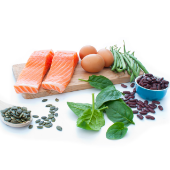 Due to the many health benefits associated with protein intake, you cannot afford to avoid them in your meals. Leave alone the anti-protein campaigns; you need it and you can eat a lot of it. How is this possible? Here are the ‘WHYs’ and ‘HOWs’ you need to know as far as protein intake is concerned.
Due to the many health benefits associated with protein intake, you cannot afford to avoid them in your meals. Leave alone the anti-protein campaigns; you need it and you can eat a lot of it. How is this possible? Here are the ‘WHYs’ and ‘HOWs’ you need to know as far as protein intake is concerned.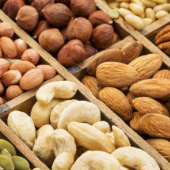 When it comes to healthy snacks, most automatically think of foods like fruits and vegetables, but nuts are actually super nutritious for you too. Unfortunately, though, a lot of people today do not include nuts in their diet because they feel this food contains too many calories. Well, these individuals are definitely missing out a
When it comes to healthy snacks, most automatically think of foods like fruits and vegetables, but nuts are actually super nutritious for you too. Unfortunately, though, a lot of people today do not include nuts in their diet because they feel this food contains too many calories. Well, these individuals are definitely missing out a  Traveling for a business occasion, family visit, or even a simple and fun vacation can really take a toll on your health. Time spent in airports and train stations combined with a diversion from your regular diet and sleep schedule often result in a lowered immune system. There are steps you can take to reduce or eliminate the likelihood of getting sick during a travel. Here are 5 ways to stay healthy while traveling.
Traveling for a business occasion, family visit, or even a simple and fun vacation can really take a toll on your health. Time spent in airports and train stations combined with a diversion from your regular diet and sleep schedule often result in a lowered immune system. There are steps you can take to reduce or eliminate the likelihood of getting sick during a travel. Here are 5 ways to stay healthy while traveling. Did you know that the average person chews over 300 sticks of gum in one year? There are 3.74 trillion sticks of chewing gum made each year and annual
Did you know that the average person chews over 300 sticks of gum in one year? There are 3.74 trillion sticks of chewing gum made each year and annual 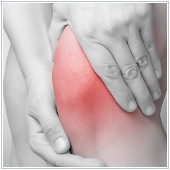 When you hear the word ‘arthritis’, the elderly typically comes to mind. It’s difficult to link the term with anyone under the age of 16, but according to the
When you hear the word ‘arthritis’, the elderly typically comes to mind. It’s difficult to link the term with anyone under the age of 16, but according to the 
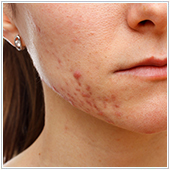 Most of us have scars that date back to childhood bicycle falls. Whether you can recall the incident or not, each scar has a story associated with it and serves as a reminder about the unique healing ability of the skin.
Most of us have scars that date back to childhood bicycle falls. Whether you can recall the incident or not, each scar has a story associated with it and serves as a reminder about the unique healing ability of the skin.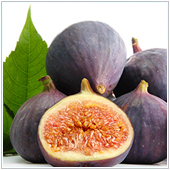 People have been reaping the health benefits of figs for centuries. This delicately sweet fruit contains an array of vitamins and minerals that can improve your overall health when they are incorporated into a nutritious diet. Follow in the healthy footsteps of the Romans and other ancient civilizations by making figs a regular part of your eating plan. Here are 6 reasons to eat more figs.
People have been reaping the health benefits of figs for centuries. This delicately sweet fruit contains an array of vitamins and minerals that can improve your overall health when they are incorporated into a nutritious diet. Follow in the healthy footsteps of the Romans and other ancient civilizations by making figs a regular part of your eating plan. Here are 6 reasons to eat more figs.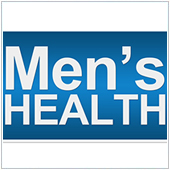 June is Men’s Health Month! Across the United States, it’s a time for men to focus on their specific health issues, get screened, visit health fairs, participate in health education, be part of outreach activities and also make media appearances.
June is Men’s Health Month! Across the United States, it’s a time for men to focus on their specific health issues, get screened, visit health fairs, participate in health education, be part of outreach activities and also make media appearances.